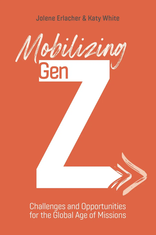|
It was several years ago that I wrote about a ministry tool called the E-Scale. Used mostly in cross-cultural contexts, “The E-Scale helps compare the cultural distances that Christians need to move in order to communicate the gospel with others. E-0 refers to evangelism of church-going Christians. E-1 extends to the very same culture through one barrier, that of “church culture.” E-2 evangelism presses into a close, but still different, culture. E-3 evangelism pushes to very different cultures.”(1) The basic idea is that the closer a person is culturally to the people they are trying to reach, the fewer the barriers there are to overcome. Sharing with an old high school friend has few barriers for communication. Moving to a Central Asian village presents a profusion of barriers to overcome; language will need to be mastered, worldview will need to be understood, customs, history, and more will need to be learned and applied to the sharing of the gospel. The relative cultural distance in this setting is immense compared to talking with an old high school buddy. On the E-scale, a high school friend is E1 where new acquaintances in Central Asia are an E-3. Missiologists and missionaries alike have discovered the importance of partnering well with national churches and near culture churches in seeing the Gospel introduced into frontier mission fields. Investing deeply in the discipleship of believers who already know the language or who grew up in a culture that was more similar to the target people group than the western missionaries then becomes an important strategic work in frontier missions by reducing barriers to communication. Some have called this “near-culture missions” which The East West Center for Missions Research and Development defines as “reaching unreached people groups through sending missionaries from geographically, culturally, and linguistically proximate people groups. This has also been referred to as proximate missions.”(2) The more we can harness the innate skills and gifts of local believers to share the gospel the more often the gospel will be shared clearly and understandably. Near-culture missions is an important strategic opportunity that the global church has been embracing. Reading a new book, Mobilizing Gen Z: Challenges and Opportunities for the Global Age of Missions by Jolene Erlacher and Katy White, I’ve begun to re-evaluate what it means to be ‘near-culture.(3)” It started with a statement from a training document for Steiger International, a ministry focused on reaching urban youth around the world.(4) The current urban generation, connected by consumerism, social media and the entertainment industry, forms the largest global culture to ever exist. It spans the globe, sharing the same values, listening to the same music, watching the same movies and sharing the same posts. This global culture is largely influenced by one predominant worldview: Secular Humanism—God is irrelevant and man is at the center. In this relativistic culture, we are god and consumerism is our religion. Many have called Gen Z digital natives. Born between 1995 and 2010, the first of Gen Z were twelve years old when the iPhone was introduced in 2007. As a generation, most did not choose to have smartphones, their parents simply bought them for them. Embracing them fully however, they have come and are coming through their teenage years with 24/7 access to the internet and social media. While the mental health results of this has been nothing short of devastating,(5) it is clear that they are more connected globally than any previous generation. It has been said that a ten year old in Omaha could very well have as much in common with a ten year old in Rome or Rio or Riyadh than with their own grandparents. And so if it is true that Gen Z is the largest global culture to ever exist, then Erlacher and White are on to something important when they say, “Given the trends in shared perspectives and values of young people across cultures, Generation Z possesses a unique opportunity. An understanding of generational views in one cultural context may equip them to engage young people more effectively in other contexts.” Could Gen Z Christians be near-culture missionaries to Gen Z Muslims, Hindus, Buddhist and atheist Chinese around the world? I’m not sure they are waiting to find out. Last year I had a zoom call with a fifteen year old in Dallas who was leading discovery Bible studies with teens from different religious backgrounds from all across the globe on Discord, a social media platform used by the online gamer community. My daughter is connected with friends in France, Turkey and the UAE. No one mobilized them to go, they were already there. For all the challenges that Gen Z faces, I am excited to see where they will lead us in the work of completing the great commission. We certainly need to continue to focus on equipping near-culture Christians living inside the 10/40 window, but might it be that Gen Z believers who are already connected with Gen Z friends inside the unreached nations of the earth will be the next powerful force in kingdom expansion. Perhaps we need to focus less on getting them to go as we went, and rather on developing disciples who love God and love others and have a heart for making disciples wherever they are . . . because for many, they are already there. 1. Missionary statesman Ralph Winter and Bruce Koch wrote “Finishing the Task: The Unreached Peoples Challenge” in which they shared the idea of the E-Scale and how to apply it to missionary strategy. This was published in an eleven page article in the Winter 2002 issue of the International Journal of Frontier Missions.
2. THE BRIDGES OF GOD: Exploring the Strategic Significance of Near-Cultural Mission. This is an extensive article written by David Bogosian filled with clear definitions and examples from both the Bible and modern day missions efforts. Accessed Nov. 22, 2023 (http://ewcenter.org/?p=8786). 3. Erlacher, Jolene; White, Katy. Mobilizing Gen Z : Challenges and Opportunities for the Global Age of Missions. William Carey Publishing. Kindle Edition. 4. Steiger International website, “Is There More?,” downloadable PDF, 9. 5. It is beyond argument that giving pre-teens and teens smart phones and social media right as they are navigating what we all know as the most difficult time of our lives - junior high - has had devastating results on the mental health and overall quality of life for Gen Z. Jonathan Haidt writes about these issues at his Substack, After Babel. See also the Varkey Foundations global study of the general health and well being of Gen Z. Through over 20,000 surveys from 20 different countries there is a wealth of information in their report which you can read HERE.
0 Comments
Your comment will be posted after it is approved.
Leave a Reply. |
The E2E Community
Categories
All
Good Books
Archives
April 2024
|
Proudly powered by Weebly







